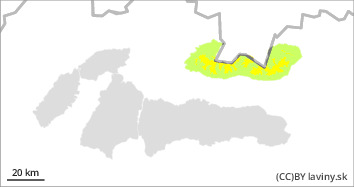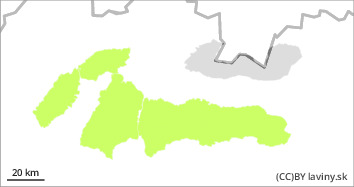
Danger level
 | 2000m |
|  |
|  |

Watch out for wind-blown pillows of new snow.
There is a moderate avalanche danger in the High and Western Tatras above 2000 m above sea level. The main avalanche problem is wind-blown snow. Especially dangerous are western orientations, narrow chutes and places under rock walls. Locally there are wind-blown snow slabs and pillows. Loosening is possible on steep slopes, especially with high additional loads. Below 2000 m avalanche danger is low. The snow cover here is generally well consolidated due to the low temperatures.
Snowpack
The snow cover is very varied. At the highest altitudes, a very hard to icy layer alternates with wind-blown snow. In the previous day and night, up to 10 cm of new snow was recorded at higher altitudes. On the western orientations there is a larger amount of new, loose snow in places. At middle elevations, the water-soaked snow cover from the previous days is freezing due to the cooling and is stabilising significantly.
Tendency
Persistent


